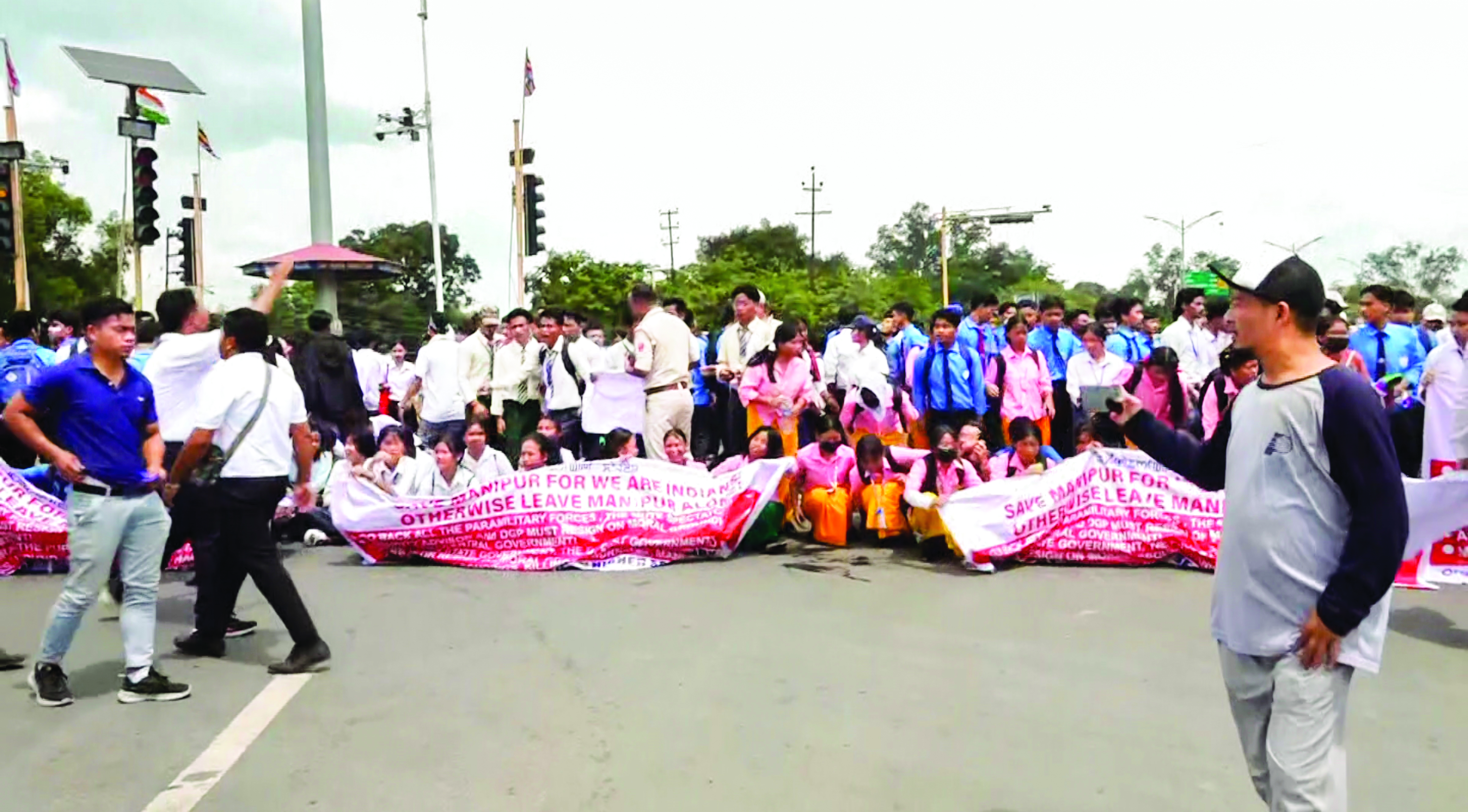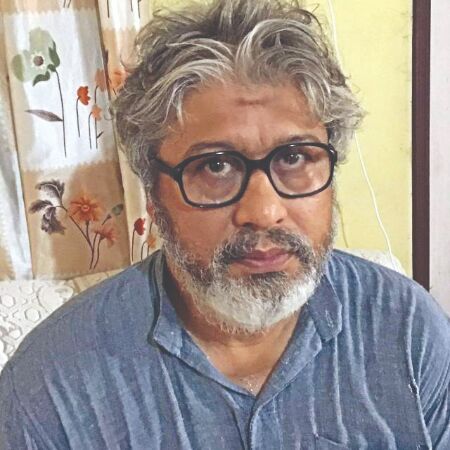Dousing the flames at frontiers
A proactive approach and long-term policy perspective on the part of the Indian government is imperative to stabilise the turbulence in Northeast, represented by the peaking violence in Manipur

Manipur, a land-locked state of 3.2 million people, which shares 390 km of porous border with Myanmar, has been divided into two enclaves since an ethnic conflict began in May 2023. Manipur has been rocked by periodic violence for more than a year between the predominantly Hindu-majority Meitei and the mainly Christian Kukis over economic benefits, government jobs and education quotas. More than 225 people have been killed and some 60,000 have been displaced since the tensions erupted last year.
A new round of clashes and exchange of gunfire took place on Saturday (September 7) in the district of Jiribam, located on India’s border with Myanmar. It is reported that at least five people, including one civilian, have been killed as violence flared between the two warring ethnic communities. Amid the violence, the state government ordered all schools in the state to remain shut on Saturday “to ensure the safety of the students and teachers”.
The Manipur government on Tuesday (September 10, 2024) banned Internet services in five districts of the Imphal Valley and imposed a curfew in two of them, as students, protesting against the rising violence in the state for the second successive day, clashed with the security forces on the streets of Imphal. More than 50 students were injured when police used force to prevent them from storming the Raj Bhavan and the Chief Minister’s residence, situated within 200 metres of each other. The serious among them were admitted to the Regional Institute of Medical Sciences in Imphal. The injured included a girl who was admitted to the hospital’s intensive care unit, a medical officer said.
India shares a 1,643-km border with Myanmar. Myanmar has been facing political turmoil since the military takeover in February 2021. The launch of ‘Operation 1027’ on October 27, 2023, by three brotherhood alliances—the Arakan Army, the Ta’ang National Liberation Army, and the Myanmar National Democratic Army—against the military Junta further exacerbated the instability. It is feared that instability in Myanmar will affect all the border states, namely Manipur, Mizoram, Nagaland and Arunachal Pradesh, as people of these states share strong ethnic and historical linkages with the people on the other side of the border.
Ethno-cultural factor
The history of ethnic clashes in Northeast India, home to at least 220 tribes speaking over 400 dialects, and each community having unique cultural identity, is always about ‘indigenous communities’ protecting their land from ‘outsiders’. In fact, in states like Assam, the socio-political history has been altered by violent clashes between indigenous and outsiders, the Assamese and the migrants from Bangladesh since the Partition. In the neighbouring Meghalaya, clashes between tribals and non-tribals often turn deadly. In addition to this, the intra-tribe rivalry also has triggered many deadly clashes. Manipur’s population includes people from 34 Scheduled Tribes, including the Kuki-Zo-Hmar people and the Nagas.
Manipur has been burning for over a year. The last violence on this scale had occurred in 1992, when there were clashes between the NSCN (IM), representing Naga interests, and the Kukis in Manipur’s Moreh town, located on the Indo-Myanmar border and a trade centre infamous for smuggling, including of drugs, Burmese teak and arms. It quickly turned into ethnic clashes between the two main tribal communities of Manipur, and spread across the state like wildfire. Over 100 Kukis are believed to have been killed and over a lakh displaced from hundreds of villages that were razed to the ground.
Since the 2021 military coup in Myanmar, many people have crossed over to Mizoram and Manipur due to shared ethnic ties with the people of these states.
Fearing “aerial bombardment and attacks”, about 5,400 people from Myanmar have taken shelter in Manipur’s Kamjong district. Kamjong district shares its eastern border with Myanmar. To its west are the Thoubal and Kangpokpi districts, dominated by Meiteis and Kuki-Zos, respectively. Earlier, over 40,000 refugees took shelter in Mizoram, while around 4,000 refugees were said to have entered Manipur. These migrants belong to the Kuki-Chin-Zo ethnic group, and share ethnic ties with the communities in Mizoram and Manipur.
It may be recalled that on February 8, 2024, India decided to scrap the ‘free movement regime’ (FMR) along the 1,643-km Indo-Myanmar border, implemented almost five years ago, in 2018, to facilitate the people living in the border areas. Under this regime, every member of the hill tribes – either a citizen of India or Myanmar who is a resident of an area within 16 km of the Indo-Myanmar border on both sides – could cross the border on producing a pass. This was issued by the competent authority and was valid for a year; availing this facility, a person could stay for up to two weeks per visit. According to the Ministry of Home Affairs, the Indian government scrapped the FMR to ensure the internal security of the country and to maintain the demographic structure of India’s Northeastern states bordering Myanmar. There has been widespread resistance from the local communities against the Indian government’s decision to fence the Myanmar border. For example:
- On March 1, The Nagaland Assembly adopted a resolution urging the Indian government to reconsider its decision to fence the Indo-Myanmar border and scrap the Free Movement Regime (FMR) with the neighbouring country. The Assembly also resolved to appeal to the Union government to work out “regulations for movement of people across the boundary in consultation with the people inhabiting the border areas, and for suitably bringing in the village council authorities concerned in the entire system of regulations.”
- On February 28, the 40-member Mizoram Assembly adopted a resolution against the Indian government’s decision to fence the India-Myanmar border and scrap the Free Movement Regime (FMR) agreement with the civil war-torn neighbouring country. On February 29, Chief Minister Lalduhoma told the Assembly that the Mizoram government decided not to collect the biometric details of refugees from Myanmar and Bangladesh in the state. The Ministry of Home Affairs had asked the state government to collect the data in April 2023.
The China factor
It is reported that the National Investigation Agency (NIA) had said in a chargesheet that the “China-Myanmar module” of the Isak-Muivah faction of the National Socialist Council of Nagaland (NSCN-IM) supported the cadres of two banned Meitei outfits to infiltrate India in order to exploit the current ethnic unrest in Manipur with a larger goal to destabilise the state and wage a war against the Government of India. The chargesheet filed in a Guwahati court on March 7 against five accused persons who were arrested in July last year in Manipur, said the accused “criminally conspired with the intent to carry out violent terror attacks targeting the rival Kuki-Zo community with prohibited arms and ammunition.”
The 1,700 km-long China-Myanmar Economic Corridor (CMEC) runs from Kunming in China’s Yunnan province to Mandalay in central Myanmar, where it then forks both southward to Yangon and westward to Kyaukphyu. Kyaukphyu, which is CMEC’s maritime gateway, has enormous strategic value, given its location on Myanmar’s Bay of Bengal coast. CMEC has practically diminished the strategic importance of Manipur as a gateway of India to East Asia.
The Indo-Myanmar border town Moreh played a strategic role in the Asian Highway (AH) project, popularly known as the Trans-Asian Highway. In addition to the Asian Highway (AH), the Trans-Asian Railway (TAR) network is promoted by the United Nations Economic and Social Commission for Asia and the Pacific (UNESCAP). The TAR is a 17,500-km long railway line passing through 28 member countries and has been described by UNESCAP as “Yesterday’s Silk Road”. As per the original plan, the rail link would enter Myanmar via Imphal using the Moreh-Tamu route.
Thus, for both the ambitious Asian Highway (AH), which connects Japan and Istanbul, and Trans Asian Railway (TAR), which connects Istanbul and Thailand, Moreh was the strategic point which linked India with East Asia. Incidentally, Moreh is a Kuki town with a sizable number of Tamils and other Indians, and is one of the fastest growing towns in Manipur. Dominant Hindu Meities wanted to take control of this strategic town by evicting Kukis. However, the AH and TAR projects have almost got marginalised after China launched its ambitious Belt and Road Initiative (BRI) in 2013. Last year marked the tenth year of China’s USD 1.4-trillion BRI, Xi Jinping’s ambitious project to connect Asia, Africa, and Europe through a supposed ‘21st-century silk road.’ But for India and Bhutan, all South Asian countries are a signatory to the BRI at present.
May be due to diminished strategic importance of Moreh, the Indian government is very disinclined to address the ethnic conflict which has killed hundreds of citizens and made thousands of people homeless. Reluctance of the Indian Prime Minister to visit Manipur during the last one year of ethnic fight is a case in point.
Land-locked seven sisters
As the Modi government has practically abandoned India’s Act east policy, the land locked seven states of Northeast are the main losers. In addition to four states–Manipur, Mizoram, Nagaland and Arunachal Pradesh—which are surrounded by Myanmar, Assam, Meghalaya and Tripura, are surrounded by Bangladesh. Incidentally, with both these neighbours, India does not keep good relations at present.
With huge investments in Myanmar and Bangladesh, China has already established its edge over India. On September 13, China announced to give duty free access to all products of Bangladesh. This will definitely strengthen China-Bangladesh relations at the expense of India.
As India has refused to join the BRI, China has established alternative trade routes bypassing India. CMEC is one such route.
In 2016, China signed 26 Memorandums of Understanding (MoUs) with Dhaka, formally making Bangladesh a part of its premier transnational infrastructure programme, the BRI. Today, 240 Chinese companies dominate all major sectors of the Bangladesh economy. From railroads, energy generation, and power transmission to transport infrastructure, digitisation, e-governance, renewable energy and meeting Bangladesh’s emission reduction targets of 2041, China has massively invested in major transport and energy projects of Bangladesh.
In 1918, the British government proposed a railway network to link Chittagong and Mandalay via Sittwe, then known as Akyab. It was to connect with a line linking Mandalay with Kunming in China’s Yunnan Province via Bhamo, but the project never went ahead. The shelved project is now getting serious attention. However, analysts argue that Padma Bridge and other infrastructure projects around China’s Belt and Road Initiative (BRI) in Bangladesh have pushed the land-locked Northeast India to the back seat. After the completion of Chittagong-Cox Bazar section of Bangladesh rail link, the rail route of Padma Bridge is going to be added with the Trans-Asian Rail Route to connect China with Myanmar. The proposed route will connect India through the Petrapole (West Bengal) border and will join the Benapole-Jessore-Narail-Bhanga-Mawa via Narayanganj-Dhaka-Tongi-Akhaura-Chattogram-Dohazari to Gundam border in Myanmar.
Observations
As both the neighbouring countries—Bangladesh and Myanmar—surround India’s land-locked Northeastern states, the future of these states depends on how the Indian government develops its strategy to deal with China. In addition to this, the 12 lakh Rohingya refugees in Bangladesh could be a major security threat to India. The Government of India must address this issue on a priority basis and come out with a long-term plan for the Northeast. Hopefully, the reluctant policymakers and short-sighted politicians do not create another Kashmir in Northeast
Views expressed are personal



